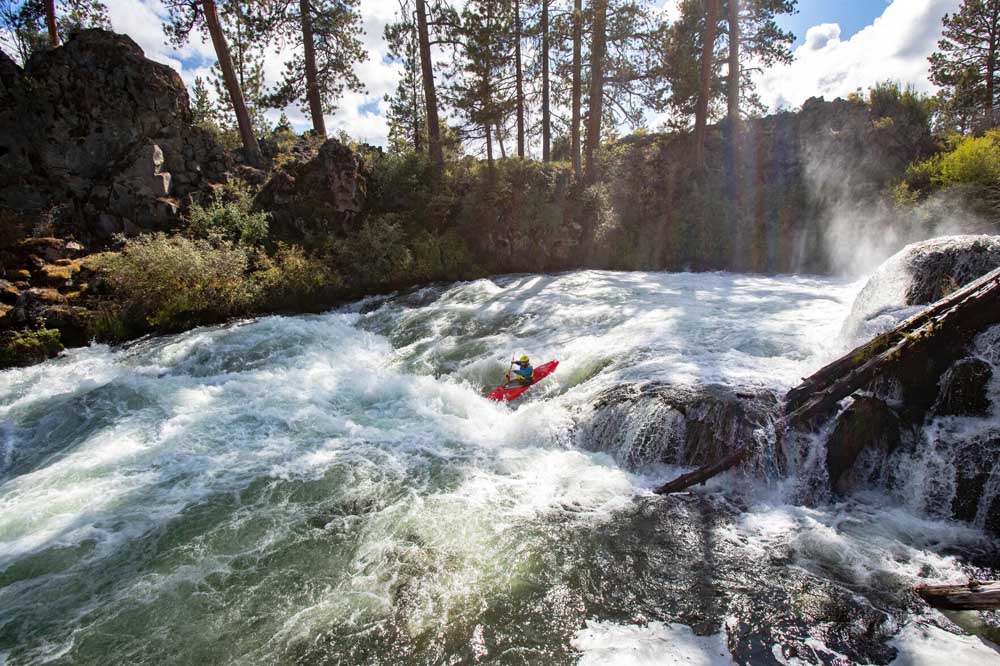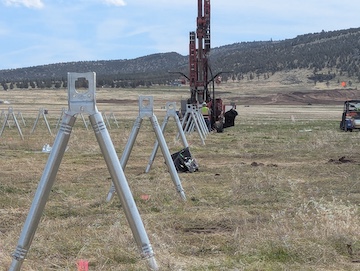Looking for the best views in Central Oregon? Catch them from a raft or kayak
Published 6:30 am Thursday, April 3, 2025

- Karl Schmidt kayaks through rapids in the Dillon Falls stretch of the Deschutes River in August 2024.
As a kayaker for the past 20-plus years, I am biased, but I think one of the best ways to experience Central Oregon’s beautiful canyons, forests, and wildlife is by floating down one of our spectacular and unique high-desert rivers.
Whitewater kayaking and rafting offer an unmatched sense of adventure and exploration. “Whitewater” refers to fast-moving, turbulent sections of a river, often characterized by rapids, waves, and obstacles created by changes in elevation and riverbed features.
The Crooked, Deschutes and Metolius Rivers are all within a short drive for Central Oregon residents, offering whitewater adventures year-round with a range of difficulty levels. In kayaking, rapids are classified from Class I (easy, with gentle currents and minimal obstacles) to Class V (expert-only, with powerful, technical, and highly dangerous conditions). Different river segments provide trips of varying lengths, so you can choose: be home for dinner or spend several nights camping out.
The Deschutes: A river of many faces
The Deschutes, our crown jewel, cuts through the heart of Central Oregon, a testament to the raw beauty of the Cascade Range. From its glacial sources in the high Cascade Lakes to its confluence with the Columbia, the Deschutes provides river experiences like no other in Oregon.
The Upper Deschutes has Class II-V sections of river that can be floated in whitewater kayaks and sometimes rafts. These sections, generally 1 to 5 miles in length, can be stitched together in combinations or enjoyed one at a time. Lava flows starting near Benham Falls intermittently pinch the river down and create significant Class IV and V rapids, as well as some more playful and raft-friendly Class III runs, like Big Eddy. These spicier rapids alternate with more placid flatwater stretches all the way through the southern end of Bend, a bit upstream of the Bill Healy Bridge.
The Riverhouse section, which starts at Sawyer Park, blends urban and wild, with glimpses of homes interspersed with sightings of soaring osprey and playful river otters. The summer dewatering, a consequence of complex water management, unfortunately silences this vibrant stretch, from mid-April to mid-October. Further north, the “Grand Canyon” of the Deschutes offers a full-day, deep canyon adventure. Where rock walls rise hundreds of feet, the sounds of the modern world fall quiet, replaced by the steady rush of moving water and the calls of canyon wrens. The feeling of being submerged into a much more wild place is profound. Sadly, this section is also dewatered during the summer, a stark reminder of the delicate balance between recreation, agriculture, and ecosystem health.
The Crooked River: A wild and untamed descent
The Crooked tumbles out of the Ochoco mountains and offers a serious wilderness adventure in the upper sections and big water excitement in the lower sections.
Several easy and approachable spring and summer floats can be found below the Bowman Dam, which creates Prineville Reservoir. One of the best whitewater runs in the West emerges above Smith Rock State Park on big snow years, when melt-driven flows ramp up in the spring and sometimes late winter, producing fairly continuous Class IV-V rapids. This one tends to have a short season, but is generally when flows at Smith Rock are over 1,000 cubic feet per second (cfs). The lower big canyon below Crooked River Ranch offers a unique summer adventure due to big springs that add water to the Crooked that originated high up in the Cascades.
The Metolius: A river of ethereal clarity
Crystal clear spring water rushes from the ground and builds to a mighty river winding through a beautiful ponderosa pine filled valley.
While beginner kayaking sections are possible in the upper stretches by Camp Sherman, the ice-cold water, frequent logs, and strong current of the river are better suited for more experienced paddlers. For those with the skills, a great adventure is to float the entire Metolius from source to Lake Billy Chinook.
Connecting with water
Whitewater sports can create unparalleled connections to water, landscapes, and the people we adventure with. But for all the fun and excitement that comes with paddling in Central Oregon, it also offers an up-close view of the mounting challenges our rivers and streams face. Demand for nearby land is constantly growing, as is the demand for the rivers’ water. Climate change continues to impact our basin, too; reduced snowpack in recent years means lower flows in the summer, and warmer water temperatures are stressing native fish.
As Central Oregon LandWatch’s board president, I see how each of our organization’s programs plays a part in protecting these rivers while supporting Central Oregon’s communities, plants, and wildlife.
Rafting and kayaking are reasonably low-impact ways to experience the Deschutes, Crooked, and Metolius Rivers, but it is more important than ever to be mindful of how we interact with these fragile ecosystems. Rivers help us meet our most basic physiological need — for water — as well as our most aspirational needs for connection and adventure. In turn, we have a responsibility to protect and respect these special, vital waters.
Always approach the river with respect. While there are many accessible adventures and experiences in Central Oregon, there is an inherent danger in all moving water, no matter the difficulty. Know before you go.
• Check the American Whitewater website for detailed river descriptions, flow information, and safety advisories.
• Consult local outfitters for up-to-date conditions and guided trips.
• Learn about Leave No Trace principles to minimize your impact on the environment.
• Always wear a properly fitted personal flotation device and understand basic river signals.
Good equipment, river experience, and thorough research are critical to having a safe and fun time.
National organization: American Whitewater
Deschutes Basin Streamflows: U.S. Bureau of Reclamation
Guidebook: “Soggy Sneakers: A Paddler’s Guide to Oregon’s Rivers”
Check it out from Deschutes Public Library or purchase
Local outfitter, for classes, gear, and current river conditions: Tumalo Creek Canoe and Kayak





